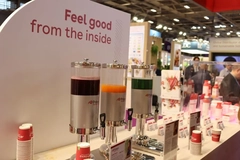Infant formula checks can be optimized with stratified sampling patterns, study flags

15 Aug 2023 --- Researchers recommend spacing samples over time in a stratified sampling pattern to catch risky pathogens like Cronobacter sakazakii in infant formula powder rather than random sampling during production. Taking more samples, even smaller ones can increase the power to detect contamination.
By simulating an extensive range of numbers of samples of contaminated product batches, the researchers showed that taking 30 or more samples detected contamination reliably. This is consistent with international guidance recommending 30 samples of 10 g each.
Simple random sampling occurs when random samples of finished products are tested. An example of systematic sampling is to take a sample every five minutes, while stratified random sampling could be to take one sample within a five-minute interval.
“Our findings show that existing sampling and testing guidance is powerful, at least for the one hazard profile our team had access to for the study,” says project lead Matthew J. Stasiewicz, associate professor in the Department of Food Science and Human Nutrition, at University of Illinois, US.
“However, this work also highlights the need for additional research and data sharing efforts into patterns of contamination in infant formula production so that sampling and testing can be better matched to current needs.”
Cronobacter contamination played an important role in the infant formula crisis in 2022, when formula produced at a plant from Abbott Nutrition was contaminated, leading the plant to close down.
Study simulation
The authors adapted a previously published sampling simulation to powdered infant formula sampling. They benchmarked it against the samples from Cronobacter-contaminated infant formula batches in Europe in the 2010s, which they note is the most current data available.
The study, published in the Journal of Food Protection, evaluated the performance of the simulation to detect published Cronobacter contamination profiles for a recalled batch – 42% prevalence of the organism – and a non-recalled batch with a 1% prevalence of Cronobacter.
 The authors note that Cronobacter is hard to detect due to localized and low-level contamination. The authors used three sampling plans consistent with international guidance to test the batches – 30 samples of 10 g, 30 samples of 25 g and 60 samples of 25 g each – and one industry stringent plan at 180 samples of 25 g each. All plans detected the contamination in the recalled batch, with a sample size of 30 or more being the most effective.
The authors note that Cronobacter is hard to detect due to localized and low-level contamination. The authors used three sampling plans consistent with international guidance to test the batches – 30 samples of 10 g, 30 samples of 25 g and 60 samples of 25 g each – and one industry stringent plan at 180 samples of 25 g each. All plans detected the contamination in the recalled batch, with a sample size of 30 or more being the most effective.
The authors note that Cronobacter is hard to detect due to localized and low-level contamination. In batches where the prevalence of the organism was less than 1%, sampling plans had a chance of over 50% to accept the set still.
Increasing the total sample mass could help detect low-prevalence and low-level hazards of the organism. Still, the researchers also emphasize that very high sample numbers would not necessarily be more powerful due to the high costs involved, for example, moving closer to testing all products produced.
Optimizing sample methods
The researchers also simulated a batch with a 0-10% prevalence of Cronobacter, indicating that stratified random sampling and systematic sampling patterns performed better than simple random sampling. This difference is more profound when the number of samples is smaller – ten or less.
“In addition to analyzing relevant scenarios, we built a web app that allows industry stakeholders to simulate various sampling scenarios and gain a deeper understanding of the effectiveness of sampling plans specific to their plants,” says the study’s lead author Minho Kim, a doctoral student at the Department of Food Science and Human Nutrition.
“With this knowledge, producers can proactively address risks and optimize current sampling practices.”
The researchers note systematic and stratified random sampling patterns could be implemented by autosampling, which usually occurs right before the packaging in a processing line. They add that this should be combined with end-product testing to verify processing steps after autosampling.
Low-prevalence contamination
As the most stringent sampling plan the researchers simulated had a high probability of accepting a batch with low Cronobacter contamination – less than 1% – the researchers suggest testing “may not be the most useful verification tool” for this low-prevalence, low-level contamination.
 The researchers stress that preventative control strategies are crucial to address contamination of infant formula.Instead, they recommend focusing on preventative control strategies, as sampling and testing would require high costs to be powerful enough to detect low residual risk.
The researchers stress that preventative control strategies are crucial to address contamination of infant formula.Instead, they recommend focusing on preventative control strategies, as sampling and testing would require high costs to be powerful enough to detect low residual risk.
“Removing water from the facility is critical in preventing the spread and growth of pathogens. The hygienic design of the facility and equipment with a controlled area can also prevent pathogens from entering and spreading in the facility. Monitoring raw ingredients can help prevent pathogens mixed into the pasteurized dairy powder in the mixing step,” underscores the report.
The authors suggest sampling and testing to verify there is no significant failure in other food safety practices.
After the US infant formula shortage in 2022, the FDA released an outline to avert future contaminations with Cronobacter or other sources. Among others, the plan aims to continue enhancing the inspection of formula manufacturers and monitoring supply.
During the shortage, almost half of US parents were forced to switch to risky feeding methods, such as watering down the formula or using expired or homemade formula. Before the crisis, this figure amounted to 8%.
By Jolanda van Hal












